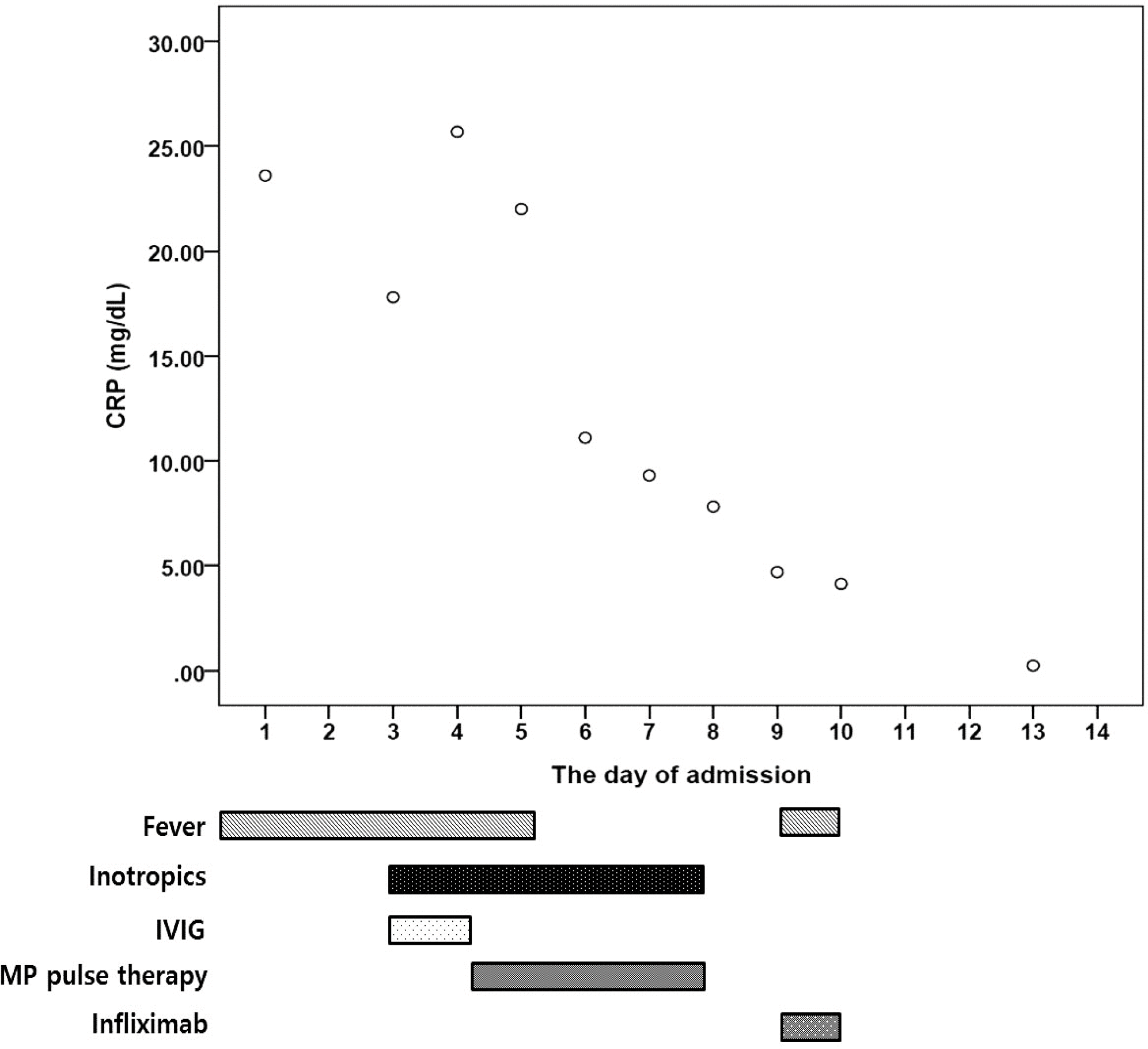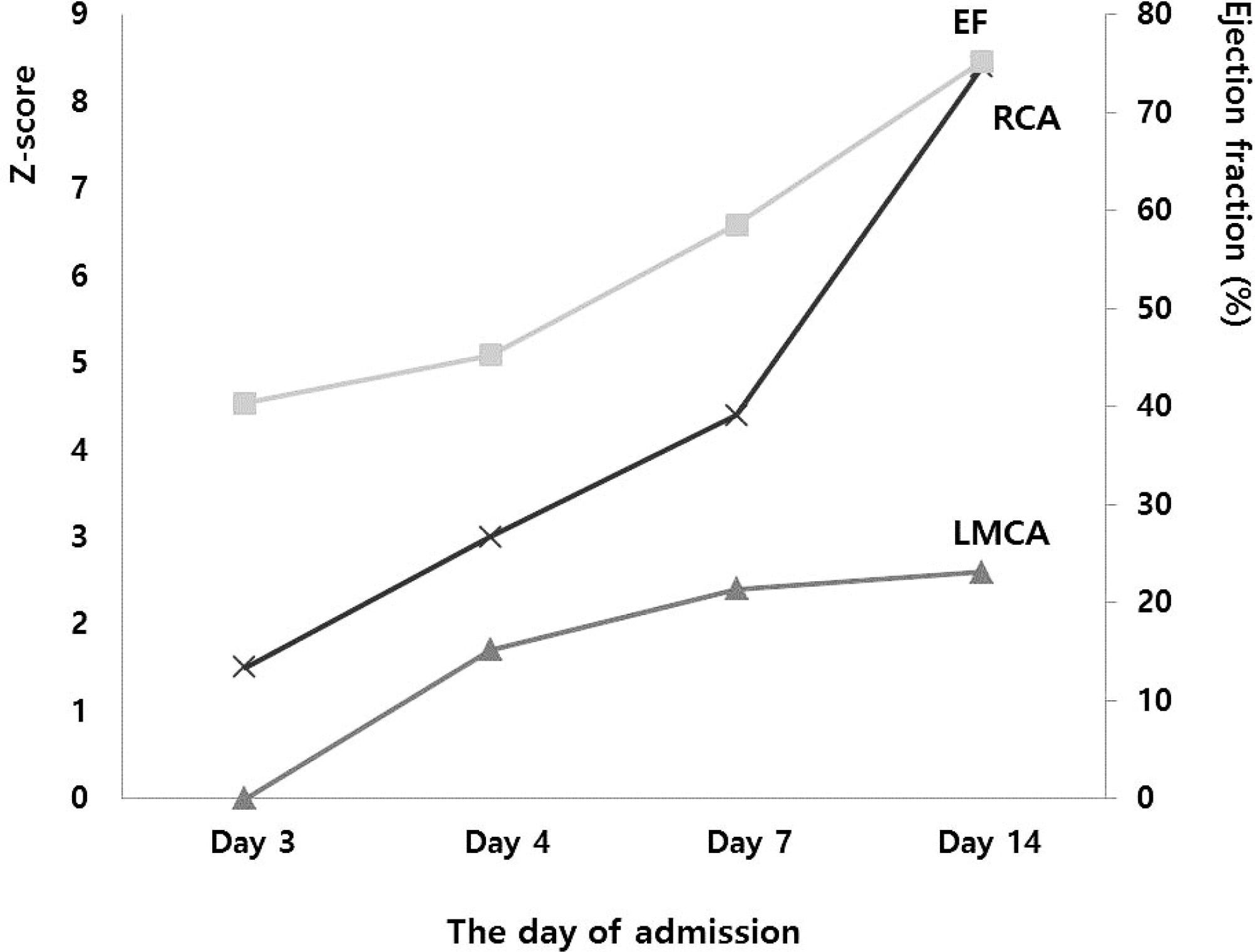Abstract
We report the case of a 7-year-old boy who showed treatment-nonresponsive hypotension (59/29 mmHg) and decreased left ventricular systolic function (fractional shortening 22%) in the acute stage of Kawasaki disease (KD). The present case serves to highlight that methylprednisolone pulse therapy should be considered in patients with intravenous immunoglobulin nonresponsive symptomatic myocarditis during the acute stage of KD.
REFERENCES
1. Falcini F, Capannini S, Rigante D. Kawasaki syndrome: an intriguing disease with numerous unsolved dilemmas. Pe—diatr Rheumatol Online I. 2011; 9:17.

3. Kim GB, Han JW, Park YW, Song MS, Hong YM, Cha SH, et al. Epidemiologic features of Kawasaki disease in South Korea: data from nationwide survey, 2009—201 1. Pediatr Infect Dis I. 2014; 33:24–7.
4. Kuwabara M, Yashiro M, Kotani K, Tsuboi S, Ae R, Naka—mura Y, et al. Cardiac lesions and initial laboratory data in Kawasaki disease: a nationwide survey in Japan. J Epidemiol. 2015; 25:189–93.

5. Aggarwal P, Suri D, Narula N, Manojkumar R, Singh S. Symptomatic myocarditis in Kawasaki disease. Indian I Pediatr. 2012; 79:813–4.

6. Yoshikawa H, Nomura Y, Masuda K, Hazeki D, Yotsumoto K, Arata M, et al. Four cases of Kawasaki syndrome complicated with myocarditis. Circ I. 2006; 70:202–5.

8. Rosenfeld EA, Shulman ST, Corydon KE, Mason W, Takahashi M, Kuroda C. Comparative safety and efficacy of two immune globulin products in Kawasaki disease. I Pediatr. 1995; 26:1000–3.

9. Singh S, Rohit M, Gupta A, Suri D, Rawat A. Late sympto—matic myocarditis in Kawasaki disease: an unusual manifes—tation. Indian J Pediatr. 2014; 81:404–5.





 PDF
PDF ePub
ePub Citation
Citation Print
Print




 XML Download
XML Download